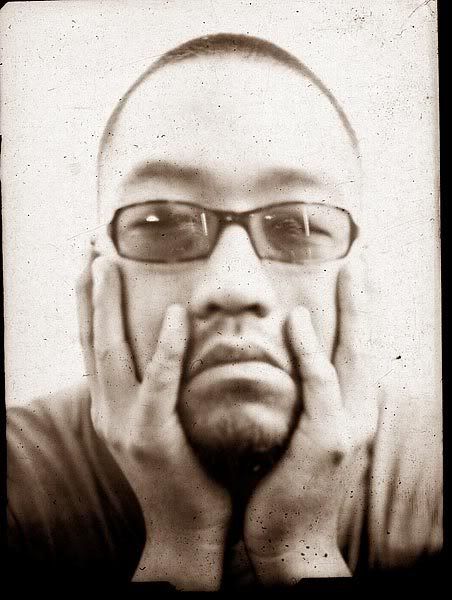| T O P I C R E V I E W |
| Vlad |
Posted - Aug 17 2007 : 11:29:45 AM
Being fairly new in non-35mm film photography the plates still remain mystery to me. How for example do you take pictures with Fotokors and Moskva-3? Is the glass the one that actually acts like film or some kind of sheet film goes under it? I would appreciate someone explaining it.
Vlad |
| 7 L A T E S T R E P L I E S (Newest First) |
| Vlad |
Posted - Sep 01 2007 : 8:57:43 PM
That is amazing! Thanks so much for sharing that! I'm way to lazy to handle the single sheets though :) I'll keep looking for a rollfilm adapter, I know they exist :).
Thanks!
Vlad. |
| ZorkiKat |
Posted - Sep 01 2007 : 2:53:05 PM
Most (if not all) of the plate holders made for FotoKor cameras were designed to use glass plates. In theory they should be able to hold film too, but I've found that film would either fall or buckle once the dark slide is drawn when the holder is placed in the camera.
Some of the FotoKor plate holders I found came with clear glass in them. I would assume that these glass plates were used as spacers or even 'pressure plates' to bridge the thickness differences between the thicker glass plates and thinner sheet films. With glass behind the cut film, the flexible film will then be held taut between the grooves of the plate holder.
I've used the Fotokor a few times with real film (9X12 cm sheets trimmed from more common 4X5 inch cut film). In more instances however, I used ordinary bromide paper instead. The paper would have a sensitivity which approximates the typical speed of photographic plates from the times when FotoKor and other similar cameras were used. The slower speed suits the FotoKor's limited (1/25-1/100) shutter speed range. The limited colour sensitivity of photopaper also mimics the non-panchromatic emulsions of that period.
The paper negatives are then scanned to produce the negatives. Printing them directly (i.e., by 'contact printing') in the traditional way would make the resulting positive look gritty, since the paper's structure will also print through.
An example of a FotoKor portrait, shot using photopaper; "positive" made by scanning the paper negative and reversing the tones in PS:

JJ
sharp-eyed kitty |
| Luiz Paracampo |
Posted - Aug 20 2007 : 5:28:12 PM
Normally positives are transfered by contact. In Brazil there is a kind of "street photographs" in some public squares. They use old plate cameras and no film. -Instead photopapers- They are called "Lambe-Lambe".
Some use to place the taken "negative" on paper in contact with another paper and obtain a "grainy" positive or shoot through a mirror and use reversal bath directly in paper. These are only folklore and funny (and very bad) photos are obtained but attract tourists. Others put a digital stuff in the internal of the old camera...the quality is almost the same.... |
| Vlad |
Posted - Aug 20 2007 : 5:13:02 PM
Awesome Luiz! Thank you! That is exactly the information I wanted to know! So are there negative glass plates so you transfer the image to the photopaper? Or it is transferred some other way?
Vlad. |
| Luiz Paracampo |
Posted - Aug 20 2007 : 5:09:47 PM
Glass plates are very fun to use. You may cut exact glass sizes and do your own emulsions like egg albumem with solved Silver Nitrate. The plate is unsensitive to light. After a bath in Potassium Iodine (In the dark) the plate becomes light sensitive! You can do your own film! Develop and fix the usual way. This is the Humid Collodium.
Another way is to use simple polished silver plates (also copper, gold or Platinum) exposed to crystal iodine fumes, The plate becames sensitive. The exposing the exposed plate to sunlight through an yellow filter makes the image appears! Fix and wash in destilled water and Alas a Daguerreotype!
Everything is explained in various "Alternative Photography" sites . You can also simplify everything using a 35.000 bucks digital back.... Hum.... |
| Vlad |
Posted - Aug 17 2007 : 7:17:38 PM
Thanks for that info, Luiz,
So the glass plates are they single use? Or you recoat them with chemicals and use again? And I presume they are used as negatives? That's what interests me.
And you're saying I can mount a digital back on a Fotokor? :)
Vlad. |
| Luiz Paracampo |
Posted - Aug 17 2007 : 6:18:24 PM
Normally those cameras use a plate film or "cut" film plates which is not necessary a glass plate film but a piece of celluloid film .
Plate cameras are the greatest picture preformer although very slow in operation. Need heavy tripods for good camera composition. Large image and life size picture preview.
You can also use them with magazines or plate exchanger as a commom film camera.
But they have great possibilities. For instance - Use X ray plates for conventional picture taking. Also use graphic films with reticule etc. The gratest advantage of such cameras is to take ONE picture develop and see results They have direct adaptability to Polaroid. -You can also prepare your own plates. ...and they also can receive the New digital backs. They are more advanced then the Modern.. Hummm.... |
